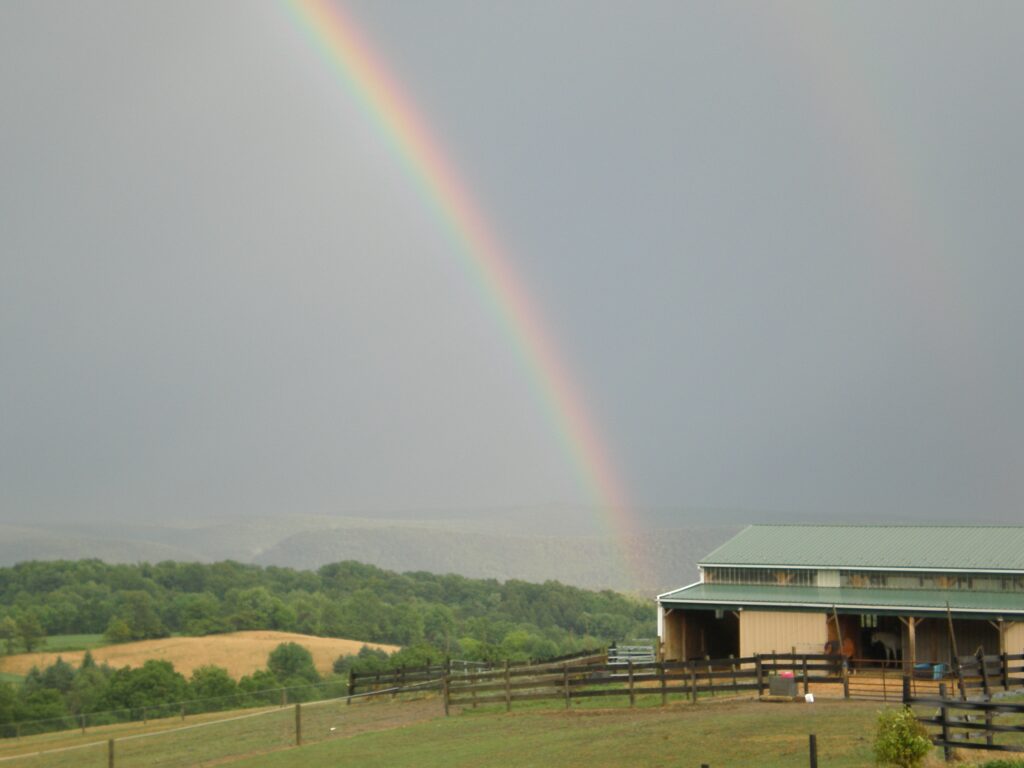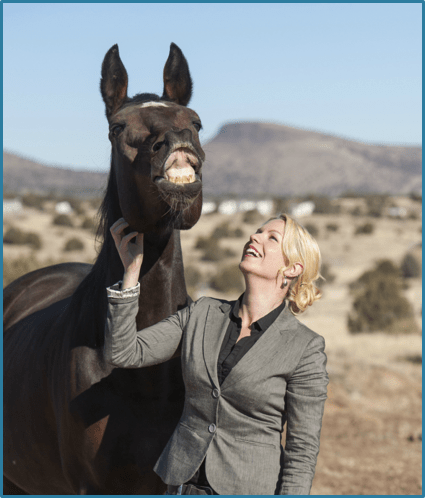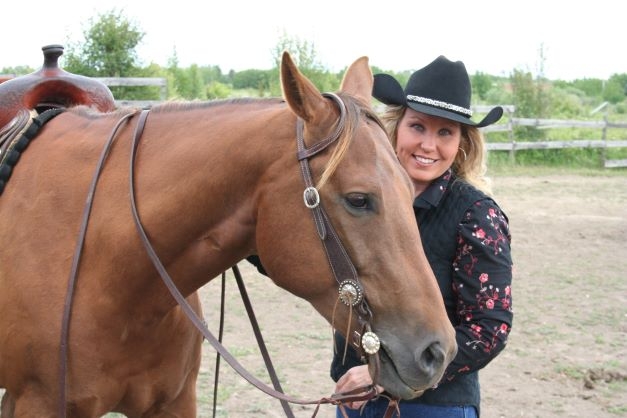By Jill Montgomery
For equine professionals monitoring horses for signs of pain is part of the job description. CHA certified professionals are evaluated on their ability to correctly identify behaviors like the stance a horse takes when experiencing hoof pain from an episode of laminitis. What if tools to identify pain were available to help identify the trouble at its very earliest stages?
Equine science has revealed a lot about horses’ natural behaviors. This work has helped the care and management of horses evolve with some impressive results. Several tools have been created to measure pain in horses. Biometric standards like elevated heart rate, respiration, and temperature remain reliable indicators a horse is having a problem, but more subtle indicators have been defined. Identifying trouble earlier may lead to better outcomes when earlier treatment is given. Familiarity with these tools may help you recognize problems in your horses sooner.
Figuring out when a horse is experiencing pain can be tricky. Several major studies have been done in the past decade investigating horses’ response to pain. Based on that work, Dutch Equine Scientists developed the Equine Pain and Welfare Assessment (EPWA)1 a smart phone app that assists the user to record validated facial expressions and body language that measure a horse’s level of pain.
Their work suggests that to identify subtle signs of pain in the horse’s face accurately takes a minimum of two minutes of observation, and to identify pain from their overall body language you need to spend 5 full minutes watching to recognize the subtle indicators. You also need to know what changes to look for in the horse’s face and body. The app provides a simple portable tool that walks the handler through the assessment process with objective and quantifiable measurements. It takes some practice to get proficient with it. The pay-off is creating a digital record on your phone and a mental record in your head, of what is normal and healthy for the individual horse you are observing, and what is not. The orbital triangle – the area around the eye- is one of the facial areas that are observed. When the seasoned Equine Professional says that horse doesn’t look himself, he or she is seeing something.
Experienced horse people may have developed an educated eye, the ability to see small differences in movement, body position, and expression. Picking up signs the horse is in pain may be something they already do. If it is not, when the details are laid out for what to look for, using the EPWA may come easily. Instructors and Barn Managers may find these tools useful for teaching their less experienced clients or staff how to develop an educated eye. Horses’ ear position, tail swishing and standing off one hoof are parts of their communication widely recognized in the horse’s vocabulary of body language. Changes in appetite and elimination are also classic indicators of potential problems. But do these signals always mean the same thing? No. The tools described here validate the meaning of specific expressions and behaviors helping to provide a way to translate their meaning from horse to human. The six assessment tools covered in this article, come with user guides that describe, or use photos and diagrams that show how to apply the scale of severity. Find links to them at end of this article.
In the busy work environment of a riding school, the focus is often on getting the job done. In this time-sensitive setting, some of the earliest warning signs of a horse with a problem could be hard to catch. Standing and watching each horse for several minutes to count movements in their face and body, may be more than the time available allows. And most horses won’t make it easy for you to know they are hurting.
Horses by their nature, hide their pain. As a matter of survival, horses mask being sick or hurt to avoid being a target for predators. While some horses are far less stoic than others, the idea that horses pretend to be in pain to get out of work, or to inconvenience their handler is inaccurate. Many horses are so good at hiding pain that their illness or injury is often advanced when first identified.
To better explain how identifying subtle signs of pain in lesson horses helps equine professionals, I turned to an expert in the field, CHA Certified Member, Nina Ekholm Fry. Nina is an equine behavior consultant and human psychologist. She is Director of Equine Programs at University of Denver’s Institute for Human-Animal Connection. When we spoke, I asked her questions focusing on CHA riding instructors who own or take care of their lesson horses. She offered a wealth of information.
Are lesson horses more prone to having pain?
The simple answer is yes. Nina states that, in general, horses who are ridden are at higher risk of developing pain and discomfort in their bodies. Noting the tack that we use to ride in can create problems. UK author and researcher Sue Dyson identified that most horses in her study had ill-fitting tack which caused pain. Dyson developed an ethogram (RHPE) 2 to score the severity of musculoskeletal pain levels in ridden horses.
It can be challenging to keep lesson horses in properly fit tack as their bodies change with the seasonal workloads and amount of work they receive. Even when their tack is well fit, carrying multiple inexperienced riders with unsteady hands that bump their mouths, lack balance and bounce on the horse’s back as they learn, exposes the horses to brief painful experiences. Over time, some will develop behaviors like bracing and pulling the reins away, and other behaviors used to avoid pain they are anticipating. Pain is a powerful teacher. Behaviors that provide relief are likely to be repeated.
Lesson horses are selected to tolerate many riders and they are often older with years of being ridden. They may have osteoarthritic changes that can be painful. Happily, in this case, it is a condition that often benefits from regular low intensity exercise. Carrying light riders and slower work is characteristic of many beginning-rider programs.
Due to inconsistencies in position, balance and movements from the humans who ride them, horses that have multiple riders are at greater risk for developing painful areas over time.
The most common sources of pain in lesson horses
Gastrointestinal pain gets a lot of attention as it is so common. A frighteningly high percentage of horses are believed to have some form of ulcer in their gut. It is important to recognize the interconnectivity of all the parts of the horse – muscular and soft tissue pain can cause gut pain. It is often detected in the poll, neck, back, legs, and hooves.
Hoof and lower limb injuries are also very common. Lameness is most frequently seen while the horse is moving. The American Association of Equine Practitioners has a Lameness Grading Scale3 which veterinarians use to measure lameness through observing the horse moving. Zero is no discernable lameness under any circumstances, and five is lameness that produces minimal weight bearing in motion and/or at rest, or a complete inability to move. There are instructions that guide the user to apply the assessment with specific parameters and conditions. This is also true for other pain scales, Horse Grimace Scale (HGS)4 for assessing pain associated with laminitis, the EQUUS-FAP5 assesses pain in the horse’s head and EQUUS-COMPASS6 assesses pain in colic, and the RHPE, mentioned earlier.
How do horses show pain?
There is a long list of behaviors horses can use to communicate they are in pain, experiencing anxiety, or both. The horse’s face can be a reliable indicator of pain. The Horse Grimace Scale outlines the eye, ear, nostril, and mouth positions that can indicate pain. Less subtle signs of pain include pinned/flattened ears, tail swishing, grinding teeth, odd positions of the front legs, taking weight off a single hoof or hooves, threatening to kick, threatening to bite, being non-reactive (sullen) tense, rearing and bucking under saddle. It is important not to interpret these behaviors as defiance or disrespect to the handler if pain is what the horse is trying to communicate.
Knowing the difference between what your horses’ normal behavior is if any of these negative – potentially dangerous behaviors show up is critical. If your horse is typically well mannered, and the horse starts these behaviors, first consider what the cause of the change may be. This advice could be applied to horses that have these behaviors when you first encounter them as well. This is not to say that training shouldn’t be used to correct bad behavior. Rather, the first step in the investigation process is to rule out the presence of pain. Evaluate the potential that pain could be the reason the horse is acting out. Nina offers a useful truism, “You can’t train away pain.”
Is there an acceptable level of pain at which a horse can or should work?
Riding instructors and barn managers are relying on the horses they care for to stay healthy so they can do their jobs. Horse-people are infamous for pushing themselves. The expression Cowboy Up (aka Cowgirl Up) generally conveys the idea that whatever it takes, the job will be done. In this mindset, noticing subtle changes in their horses may be more difficult. It is important to avoid applying this standard to your horses, you have a choice about working through pain, they don’t.
Acute pain is a sudden onset indicating a change in the horse’s physical well-being, it is a situation when identification and intervention may prevent the condition from becoming more severe or even permanent. Discovering the cause and taking action to alleviate the cause can pay-off by reducing the severity of the problem, speeding the recovery, and the return to work. Chronic pain (defined as persistent over several months) is common in lesson horses, particularly as it relates to joint issues. Once identified and diagnosed, take steps to reduce the horse’s pain through appropriate medical treatment, adjustments in the workload and monitor for changes.
Improving the horse’s health and well-being, also benefits the safety and success of the people working with them and learning from them.
Tips for less stressed and painful horses
- When horses are “off the job” give them as much freedom of movement as possible.
- Offer free choice grass hay or grazing time if possible.
- Horses are herd animals let them interact with other horses.
- Use tack that fits well.
Take Aways:
- Observing what is normal for your horses is time well spent. Watch them in all the places they live; stall, paddock, with and without herd mates and while working.
- If the horse doesn’t look or act normal, investigate.
- An ounce of prevention is worth a pound of cure.
- Pain management in horses and risk management with horses go hand in hand.
- You can’t train away pain.
End notes and Resources can be found at the links below
- The Equine Pain and Welfare Assessment App from the Faculty of Veterinary Medicine at Utrecht University and Stichting De Paardenkamp
Android EPWA – EPWA – Apps on Google Play
Apple EPWA – EPWA on the App Store (apple.com)
- Ethogram of the Ridden Horse Part 1: Introduction – Owl Equestrian https://www.ncbi.nlm.nih.gov/pmc/articles/PMC8235099 Jun 18, 2021 The RiddenHorse Pain Ethogram (RHPE) was developed to facilitate the differentiation between horses with and without musculoskeletal discomfort , Sue Dyson, et al
- https://aaep.org/horsehealth/lameness-exams-evaluating-lame-horse American Association of Equine Practitioner’s Equine Lameness Grading Scale 0-5. AAEP.org
4. Using the Horse Grimace Scale (HGS) to Assess Pain Associated with Acute Laminitis in Horses (Equus caballus) (semanticscholar.org) Using the Horse Grimace Scale (HGS) to Assess Pain Associated with Acute Laminitis in Horses (Equus caballus) Emanuela Dalla Costa,1,* Diana Stucke,2 Francesca Dai,1 Michela Minero,1 Matthew C. Leach,3 and Dirk Lebelt2
- Monitoring equine head-related pain with the Equine Utrecht University scale for facial assessment of pain (EQUUS-FAP) – PubMed (nih.gov)February 2017, Pages 88-90 Authors Johannes P.A.M.van LoonaMachteld C.Van Dierendonckabc
6. Monitoring acute equine visceral pain with the Equine Utrecht University Scale for Composite Pain Assessment (EQUUS-COMPASS) and the Equine Utrecht University Scale for Facial Assessment of Pain (EQUUS-FAP): A scale-construction study – ScienceDirect Machteld C.VanDierendonckabcdJohannes P.A.M.van Loona 2016.
Special thanks to Nina Ekholm Fry. She is the Director of Equine Programs at University of Denver’s Institute for Human-Animal Connection and Adjunct Professor in the Graduate School of Professional Psychology and the Graduate School of Social Work where her work focuses on therapeutic human-horse interactions and on equine behavior and welfare. Nina is a former Equestrian Special Olympics Coach and teaches Equine Behavior at Yavapai College in Arizona. She is a CHA certified riding instructor (Level 4) and holds a certificate in Equine Management from the Vocational College of Ostrobothnia, Finland. As a practitioner member of the International Society of Equitation Science (ISES), she is dedicated to ethical equitation, correct application of learning theory, and the understanding of equine cognition, behavior, and mental states as part of equine management, assessment, handling, and training. She has a background as a mental health practitioner providing clinical services, specializing in trauma treatment, as a competitive rider and equine behavior consultant, and as an academic professional actively engaged in national and international organizations for both human and equine health.
Author, Jill Montgomery is the CEO of JRAM Enterprises, Inc. An Equine Business Consulting Firm that works to keep equine activities safe and accessible for everyone. FMI Jill@JRAMEnterprises.com
###



